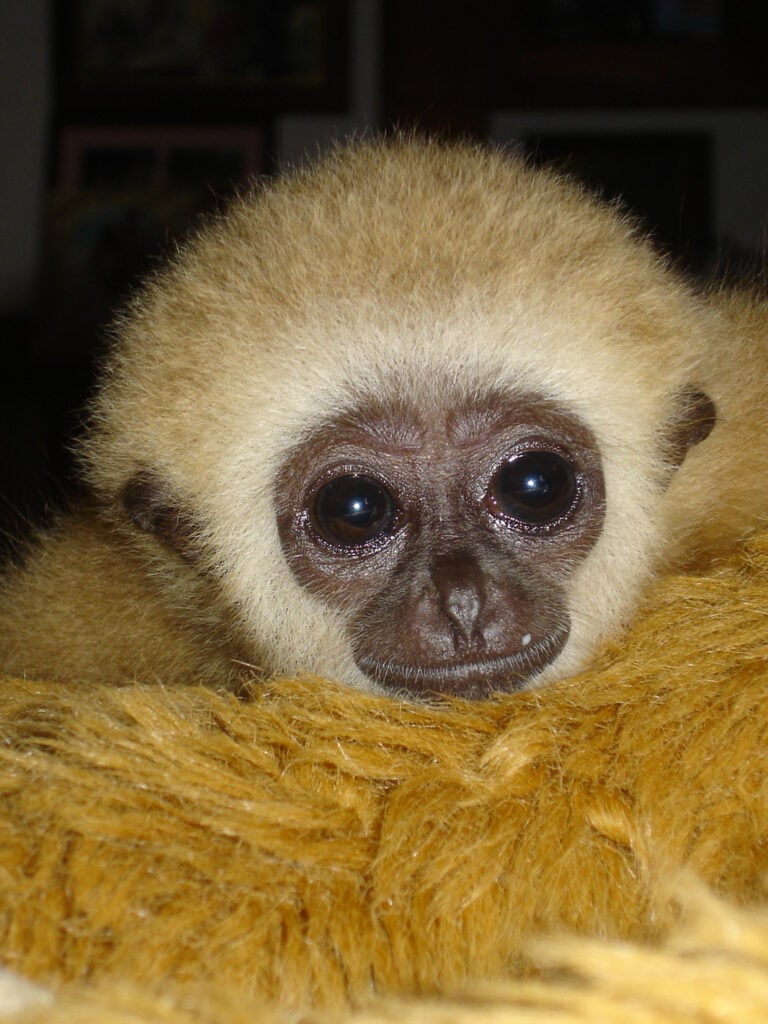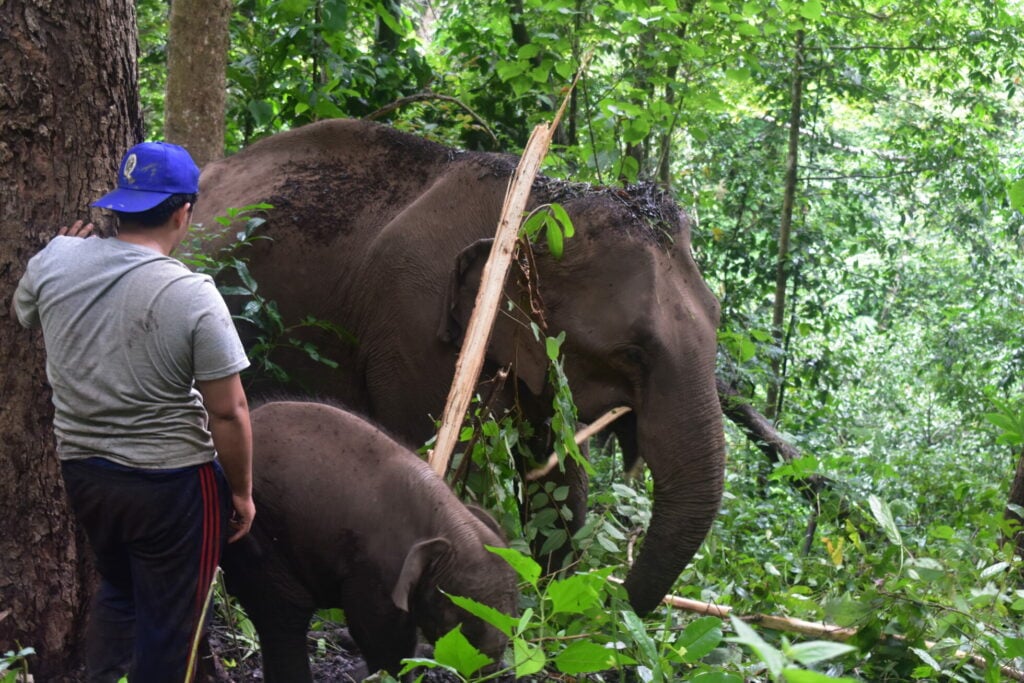Explore the different types of peccaries found in Costa Rica, as well as their importance in the local ecosystem, habitats, behavior, and social structure.
GVI
Posted: May 10, 2023

Petrina Darrah
Posted: November 3, 2022
4 Min read
There are 20 species of gibbons swinging and hooting throughout the lush tropical forests of Southeast Asia. These long-limbed primates are fascinating – here are seven facts about gibbons. Plus, what you can do to help protect them.
They might look like monkeys, but gibbons are actually apes. The most obvious difference between monkeys and apes is that monkeys have tails – gibbons are tailless, with the broad chest and upright position characteristic of apes.
Another quirky, but less visible, difference is that gibbons and other apes have appendixes like humans, but monkeys don’t.


Gibbons are the only primates to be classified as lesser apes due to their small size. This sets them apart from the great apes – gorillas, chimpanzees, orangutans, and bonobos.
Gibbons live in dense forests spread across southern Asia. They are nimble, acrobatic creatures adapted to life in the trees. Gibbons have powerful hook-shaped hands ideal for gripping branches. Their arms are long and strong giving them an impressive reach, and their legs are equally as powerful, helping them boost through the trees.
Most of their existence takes place in the jungle canopy – they rarely need to touch the ground.
With their long, powerful arms, gibbons can power through jungle canopies at speeds of up to 55 kilometres per hour. Their method of swinging through the trees is called brachiating. When they get going, gibbons can swing across gaps of 15 metres in a single leap.
Brachiating also gives gibbons the ability to swing out and pluck fruits dangling at the end of branches.
Because of the speed at which they move, and their arboreal existence in the forest canopy, researching gibbons requires specialised skills and equipment such as camera trapping and tracking. It also means catching a glimpse of these creatures is an exceptionally unique experience.
Gibbons differ from apes in that they are monogamous and form long-term pair bonds, often staying together for life. They live in family groups with an adult pair and their offspring, which is unique in the primate world.
The parent pair defends a familial patch of forest and raise their young there. As many as four young gibbons will stay with their parents at any one time. The young stay with their parents until they are around five or six years old, reaching maturity at around eight years old.
Gibbons have loud and musical voices which can carry for great distances through their forest homes. Males and females sing duets, and sometimes whole families sing complex songs together.
What’s more, researchers in Sumatra have observed gibbon mothers teaching their daughters how to sing.
In findings published in Discover Magazine, researchers reported that mother gibbons modify their singing with their daughters, in what is thought to be a form of “motherese” – similar to the simplified, high-pitch language humans use with their babies. They noted that adult daughters who were close to full maturity could match and stay in sync with their mothers’ singing as a result of their mothers’ training.
This study was the first evidence of gibbon mothers helping their young to vocalise. Previously, apes had seemed to figure out their vocal range on their own.
One species of gibbon was only discovered on the border between Myanmar and China as recently as 2017.
The skywalker hoolock gibbon was given its name by the team who discovered it. “Skywalker” is a reflection of its home in the forest canopy, and the historical Chinese view of these primates as mystical beings.
The discovery of this gibbon is proof of the fact that there’s a lot we still don’t know about these small apes. To help protect them and ensure their existence long into the future, there is still a lot of research needed to better understand gibbons.
Five gibbon species are Critically Endangered and 14 are Endangered according to the IUCN’s Red List of Threatened Species.
This makes gibbons one of the most threatened primate families. Their populations are dwindling due to habitat loss as forests in Asia are removed to expand urban centres and agricultural land. Because they live their lives in the treetops, gibbons depend on intact forests for their survival. When forests are destroyed or fragmented, a lack of food and social opportunities causes gibbon populations to decline.
Gibbons also fall victim to poaching – their bones are used in traditional medicine and they are also sought after as exotic pets.
For passionate volunteers and interns, GVI offers the opportunity to take part in gibbon conservation programs in Chiang Mai, Thailand. Endangered white-handed gibbons live in this area, and you can assist in their conservation by tracking them through the dense rainforests. You’ll hear their calls and observe their behaviour, while gathering and analysing valuable data on their group size and habitats.
The programs are diverse and as well as tracking and documenting gibbons, you can also take part in elephant hikes. This is a chance to collect behavioural data on the elephants living in the area, and get to know more about the Karen elephant herding community. Many other endemic mammals and birds live in the area around Chiang Mai, so you’ll learn about the rich biodiversity and overall health of the forests.





Take action to help protect gibbons – learn more about GVI’s gibbon conservation internships or volunteer programs.
Some images by: Joshua J. Cotten, David Gardiner
By Petrina Darrah
Explore the different types of peccaries found in Costa Rica, as well as their importance in the local ecosystem, habitats, behavior, and social structure.
GVI
Posted: May 10, 2023